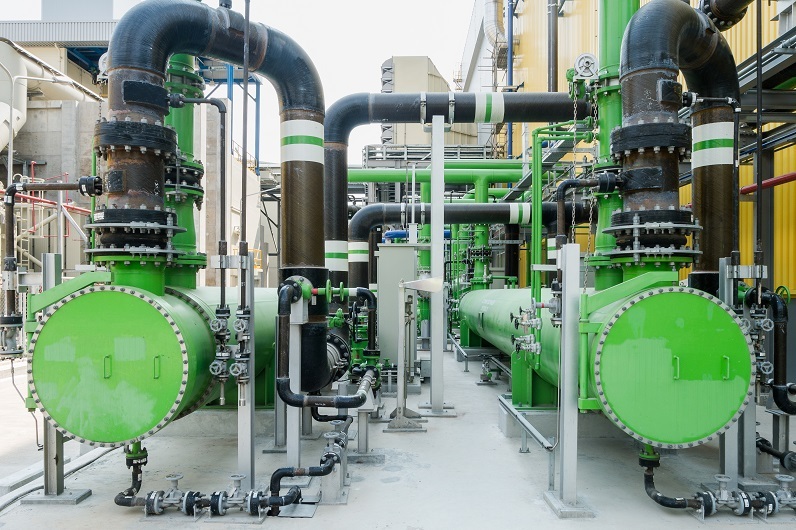Integration of maintenance and finance in spare parts management
Asset-intensive companies are often challenged to align the objectives of operations and finance teams, particularly when it comes to governing the management of spare part inventories that support operation and maintenance. Maintenance teams aim to guarantee the availability of equipment and processes, while finance looks after the minimum working capital. These objectives seem to compete, yet finding the right balance is crucial for the smooth running of an operation.

The first step to finding this balance is to recognize inventory management and supply as an integral process in which both internal customers (as demand generators) and suppliers and resource managers (Materials, Purchasing and Finance) play specific roles. Their individual responsibilities to optimise the use of these resources must be focused on the overall benefit to the organisation, rather than their own performance indicators.
Once this concept is accepted, the determination of stock and procurement strategies based on operational (reliability, criticality), logistical (demand, lead time) and economic (loss of profit, storage cost, acquisition cost and configuration of an economic risk analysis) factors, combined with periodic reviews, and with the ability to flex to the needs of ever-changing operational requirements, can provide a sustainable way of balancing the needs of maintenance and finance.
The financial perspective of inventories: what maintenance teams need to understand
Inventories are an investment in physical resources that are stored to minimize the risk of potential losses or costs. For Maintenance, Repairs and Operations (MRO) groups, ensuring the timely supply of spare parts at minimum cost is a balancing act. In addition to material acquisition costs, maintaining an inventory has further hidden costs:
- Opportunity cost of capital (+/- 15%)
- Cost of operation and space occupation (+/- 13%)
- Cost of inventory shrinkage (+/- 8%)
Therefore, from a financial point of view, efficient inventory management is focused on having a dynamic inventory, higher turnover, reducing inventory damage costs and optimisation of working capital.
The maintenance and reliability perspective: what financial managers need to understand
The goal of maintenance is to ensure that assets keep performing their required function. Maintaining an asset improves its reliability, which ultimately results in greater availability, less downtime and overall higher productivity.
However, there is a tendency to think that having more parts available will reduce the chances of production losses when those parts are required. It’s important to remember that once you have enough parts to meet a failure event, excess inventory does not contribute to improved availability.
This can sometimes be hard to quantify, and often leads to teams relying on vendors to provide advice on stock quantities rather than conducting a technical analysis. We have found that vendors often over-estimate required inventories by 20-40% beyond what is necessary.
Another idea to keep in mind is that critical items are generally more reliable. Higher reliability results in less failures, less demand for parts and less turnover of the parts in inventory. Therefore it is important to understand that low turnover does not imply obsolescence, but may be a sign of a healthy maintenance strategy. Rather, inventory justification should be based on an economic risk analysis.
The right management approach and path
The primary objective of maintenance inventories should be to procure a level of stock that perfectly balances the cost of having the part against the cost of not having the part. If the decisions that govern the inventory lean towards either of these two sides of the scale, they will affect the business by either the additional financial cost of the unwanted inventories or the operational costs incurred by the unavailability of a part.
Conducting an economic risk analysis is important to establish the appropriate replenishment and stock policies for each type of inventory. The rationale for MRO inventory optimisation is to minimise the total long-term operating cost of the equipment by taking into account:
- The cost of acquisition and storage of spare parts during the life of the equipment.
- The cost of unavailability of the parts in the event of insufficient inventory to cover failures.
The first cost increases in direct proportion to the inventory, while the second cost is reduced with the inventory, since the probability of additional failures is exponentially reduced (and therefore its associated cost of unavailability) with the increase of spare parts.
Economic risk analysis is an effective and efficient way to improve the operational reliability of maintenance processes, and can be conducted quickly. It allows modeling and analyzing different scenarios in order to determine the right time to perform a maintenance or inspection activity, and can help organisations to understand the economic feasibility of a project and determine the optimal number of spare parts throughout the life cycle of the assets.
Orien Critical Spares Analysis
Orien has a critical spare parts analysis module which allows organisations to evaluate the holding strategy for critical spare parts throughout the life of the asset and under different scenarios. Orien takes the guesswork out of your spares inventory management by recommending the optimal number of spare parts over time, analyzing system reliability, downtime costs by spare unavalability, storage and purchasing costs, compared to the current holding strategy.
Our experience
Orien is a cloud-based asset management solution relied on by the world’s largest asset-intensive industries. Developed by Ausenco in collaboration with leading industry experts, Orien makes it easy to consolidate, collaborate on, and control maintenance strategies and budgets across your organization to keep assets working for you. Orien’s clients manage lifecycle costs and reduce uncertainty by understanding the critical activities that keep their operation running. With teams located worldwide and 24/7 support, Orien puts you on the path to better asset performance.
Our team of experts are ready to help, reach out to Carlos to learn more.
